Create Your Own Graffiti-Style Artworks: Drawing Tips
Creating graffiti-style artworks is not just about splashing paint on a wall; it's an exhilarating journey of self-expression, creativity, and cultural commentary. Whether you're a seasoned artist or a curious beginner, the vibrant world of graffiti offers endless possibilities. This article provides essential tips for creating vibrant graffiti-style artworks, exploring techniques, materials, and inspiration to help unleash your creativity and develop your unique artistic voice. Are you ready to dive into the colorful universe of graffiti art? Let’s get started!
Graffiti art has a rich history that dates back to ancient civilizations, where markings on walls served as a form of communication. Fast forward to the late 20th century, and graffiti emerged as a powerful voice for marginalized communities, often seen as a rebellious act against societal norms. Today, graffiti has transformed from an act of vandalism to a respected art form, celebrated in galleries and public spaces worldwide. It’s fascinating how this art has evolved, isn’t it? Understanding its cultural significance can deepen your appreciation and inspire your creations.
Before you unleash your creativity, it’s crucial to gather the right tools and materials. Here’s a quick rundown of what you’ll need:
- Spray Paints: The backbone of graffiti art. Look for high-quality spray paints that offer vibrant colors and good coverage.
- Markers: For detailed work and outlines, use permanent markers or paint markers.
- Surfaces: Experiment with different surfaces like canvas, wood, or even walls, but always ensure you have permission to paint on private property.
- Protective Gear: Don’t forget to wear gloves and masks to protect yourself from fumes and paint.
Having the right tools can make all the difference in your artistic journey, so invest wisely!
Now that you’re equipped with the essentials, let’s delve into some fundamental techniques that will lay the groundwork for your graffiti art. Mastering these basics will help you develop your style and boost your confidence as an artist.
Line work is the backbone of any graffiti piece. Clean, bold lines can make or break your artwork. Start by practicing various line thicknesses and styles. Use your wrist, not just your fingers, to create fluid movements. Remember, the more you practice, the better your control will be. Think of your lines as the skeleton of your artwork—without them, your piece may lack structure and definition.
To add depth to your graffiti, effective shading is key. It’s like adding dimension to a flat surface. Use lighter and darker shades of the same color to create a three-dimensional effect. Gradually blend these shades to avoid harsh lines, making your artwork more dynamic. Imagine how the light interacts with objects; this principle will guide you in creating realistic depth in your pieces.
Color plays a vital role in graffiti art. A well-chosen color palette can evoke emotions and set the mood for your artwork. When selecting colors, consider the principles of color theory. Complementary colors can create striking visuals, while analogous colors can provide harmony. Don’t be afraid to experiment! Your color choices are an extension of your personality and can make your art truly unique.
Color blending can elevate your graffiti to the next level. Techniques like feathering, where you lightly spray overlapping colors to create a gradient effect, can add sophistication to your work. Practice blending colors on scrap surfaces before applying them to your final piece. It’s like mixing music; the right blend can create a masterpiece!
Creating contrast in your artwork is essential for drawing attention. Use contrasting colors to highlight key elements of your design. For example, placing a bright color against a dark background can make your central image pop. Think of contrast as the spice in a dish—it enhances the overall flavor of your artwork!
Inspiration is everywhere! From street art tours to online platforms like Instagram and Pinterest, you can find countless sources to spark your creativity. Don’t hesitate to explore different styles and artists, but remember to develop your unique voice. Keep a sketchbook handy to jot down ideas or doodle whenever inspiration strikes. It’s like keeping a treasure chest of creativity!
Once you’ve created your masterpiece, it’s time to share it with the world! Social media platforms like Instagram and Facebook are fantastic for showcasing your work and connecting with other artists. Consider participating in local exhibitions or art events to gain recognition. Remember, sharing your art is not just about gaining followers; it’s about building a community and inspiring others!
Q: Do I need special training to start graffiti art?
A: No formal training is required! Just pick up your tools and start practicing. There are plenty of tutorials online to help you along the way.
Q: Is graffiti art legal?
A: It depends on where you are. Always seek permission before painting on private property and look for designated public art spaces.
Q: What’s the best way to improve my skills?
A: Practice regularly, seek feedback from other artists, and don’t be afraid to experiment with new techniques!
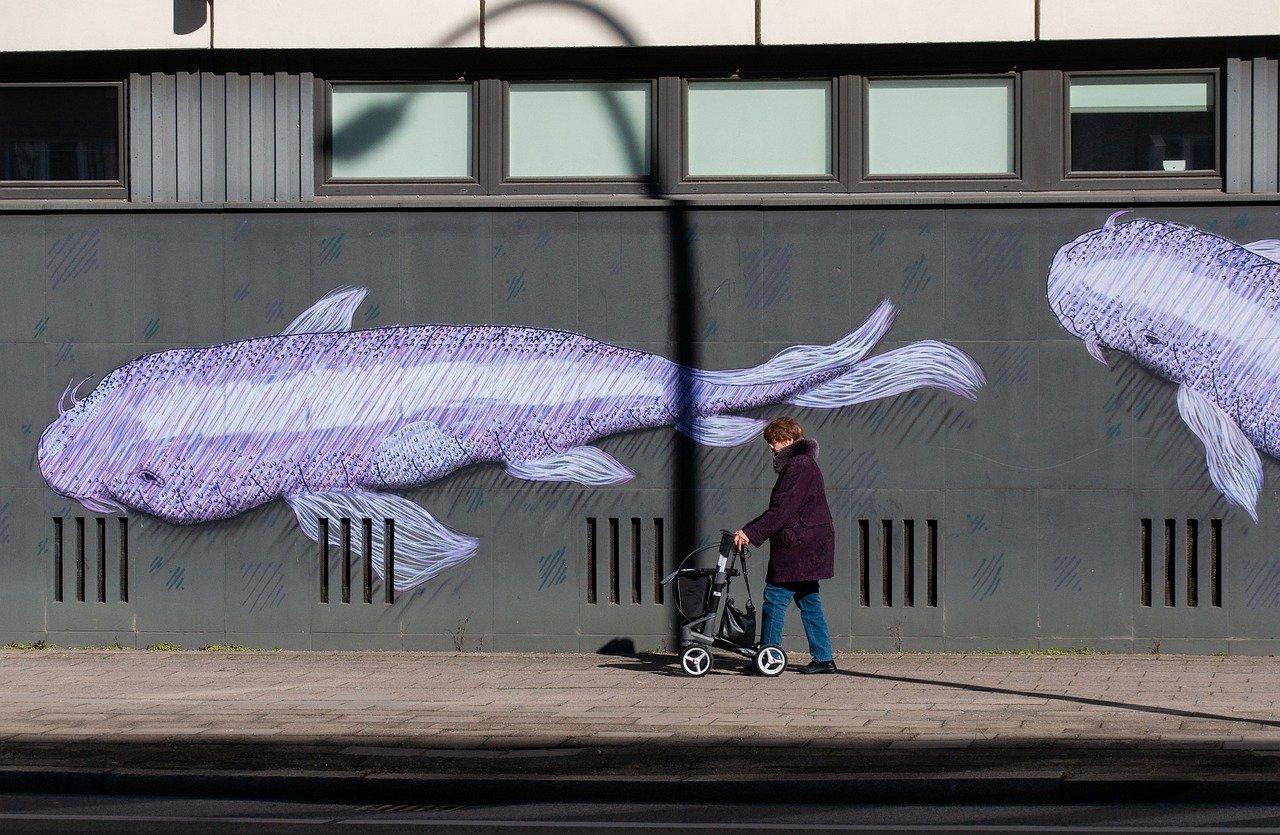
Understanding Graffiti Art
Graffiti art is more than just colorful scribbles on a wall; it's a vibrant expression of culture, identity, and emotion. To truly appreciate graffiti, one must delve into its rich history and evolution. Originating in the late 1960s and early 1970s in the streets of New York City, graffiti began as a form of rebellion against the establishment, often seen as vandalism. However, this form of artistic expression has undergone a remarkable transformation over the decades, evolving from a stigmatized act into a respected and celebrated art form.
In the early days, graffiti was primarily associated with tags—simple signatures that marked territory. As the movement grew, so did the complexity of the art. Artists started experimenting with colors, styles, and techniques, leading to the emergence of intricate murals that told stories, conveyed messages, and reflected social issues. Today, graffiti is recognized for its cultural significance and is often showcased in galleries, festivals, and public spaces. It serves as a visual dialogue, addressing themes such as political unrest, social justice, and community pride.
It's fascinating to see how graffiti has been embraced globally, adapting to local cultures while maintaining its core essence. In cities like Berlin, São Paulo, and Melbourne, graffiti has become a vital part of the urban landscape, attracting tourists and art enthusiasts alike. This global acceptance has opened doors for artists to gain recognition and even commercial success, blurring the lines between street art and traditional art forms.
Despite its evolution, the debate surrounding graffiti continues. Some view it as a legitimate form of art that brings life to dull urban environments, while others still consider it vandalism. This dichotomy fuels the passion of graffiti artists, who often use their work to challenge societal norms and provoke thought. Whether you see it as art or vandalism, one thing is clear: graffiti has carved out a significant niche in the world of artistic expression.
As you embark on your own graffiti journey, understanding this context will enrich your creative process. You'll find that graffiti is not just about the final piece; it's about the stories, struggles, and inspirations behind each stroke of paint. So, grab your spray cans, channel your inner rebel, and let your creativity flow!
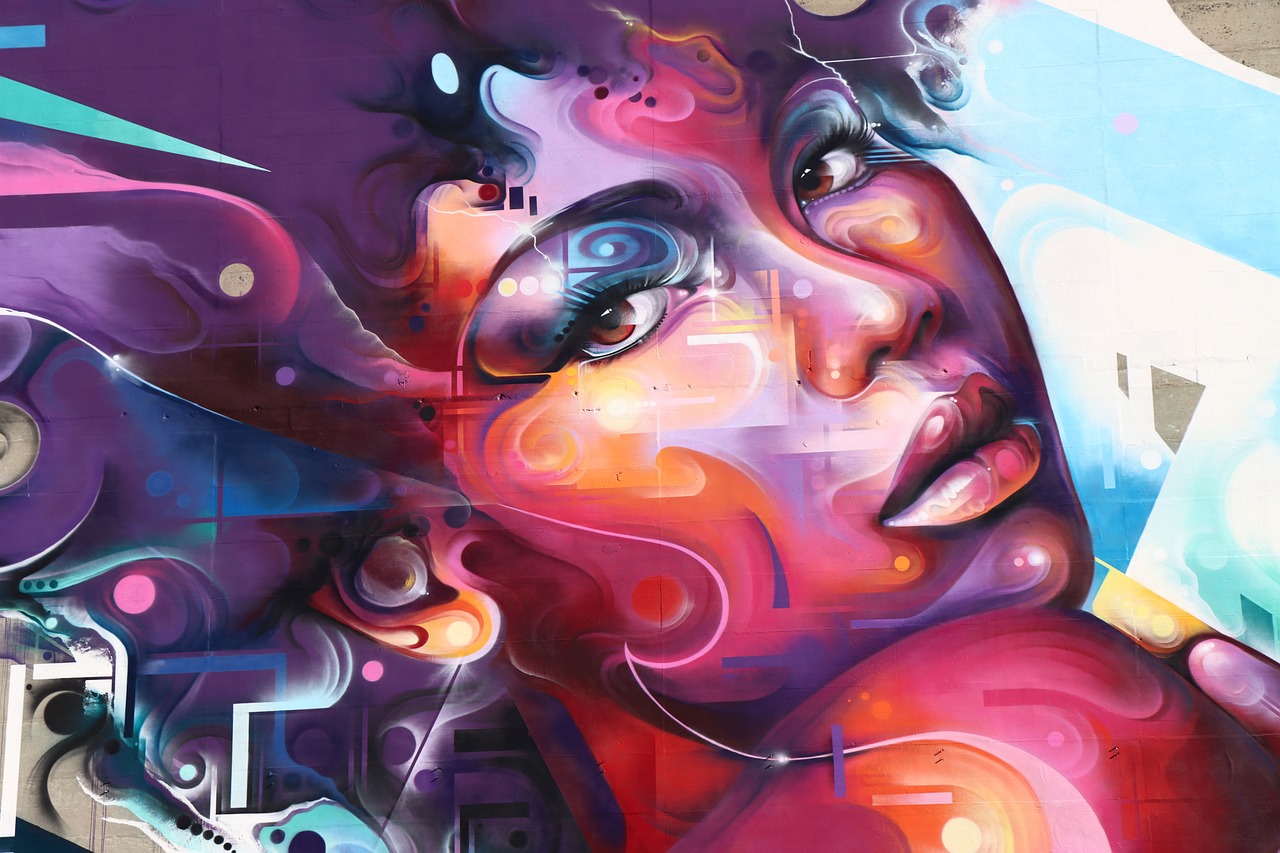
Essential Tools and Materials
When it comes to creating stunning graffiti-style artworks, having the right tools and materials is absolutely crucial. Think of your tools as the instruments of a musician; without them, you can’t create the masterpiece you envision. The world of graffiti art is vibrant and diverse, and your choice of materials can significantly influence the outcome of your work. So, let’s dive into the essentials that every budding graffiti artist should have in their arsenal!
First and foremost, spray paints are the backbone of graffiti art. They come in various colors, finishes, and sizes, allowing for a wide range of creative expression. When selecting spray paints, consider the following:
- Type of Paint: Look for high-quality, low-odor spray paints that are specifically designed for graffiti. These paints often have better coverage and vibrant colors.
- Finish: Decide whether you prefer a matte or glossy finish, as this can affect the overall look of your artwork.
- Size: Different nozzle sizes can create various line widths. A mix of fat and skinny tips can add versatility to your work.
In addition to spray paints, markers play a vital role in graffiti art. They are perfect for adding intricate details or outlines that spray paint might not achieve. Look for permanent markers with a wide tip and vibrant colors. Some artists also prefer paint markers as they provide a more controlled application and can be used on various surfaces.
Speaking of surfaces, the choice of canvas or surface is equally important. While traditional graffiti is often created on walls, you can also experiment with:
- Canvas: Great for indoor displays or exhibitions.
- Wood: Offers a rustic feel and can be used for outdoor projects.
- Paper: Ideal for sketches and practice before hitting the streets.
Don’t forget about protective gear! Safety should always be a priority, especially when working with spray paints. Consider wearing a mask to avoid inhaling fumes, gloves to protect your hands, and old clothes that you don’t mind getting messy. After all, the creative process can get a bit chaotic!
Finally, let’s talk about accessories. Some handy tools include:
- Stencils: Perfect for creating consistent shapes and designs.
- Sketchbooks: To brainstorm and sketch out your ideas before committing to a final piece.
- Cleaning Supplies: Keep your workspace tidy and your tools in good condition.
In summary, equipping yourself with the right tools and materials can make a world of difference in your graffiti art journey. Remember, every artist has their unique style, and experimenting with different tools will help you discover what works best for you. So gather your supplies, unleash your creativity, and let your artistic voice shine!
Q: What type of spray paint is best for beginners?
A: For beginners, it’s recommended to start with high-quality, low-odor spray paints that are specifically designed for graffiti. These paints offer better control and vibrant colors.
Q: Can I use regular markers for graffiti art?
A: While regular markers can be used, it’s best to opt for permanent markers or paint markers as they provide better adhesion and a more vibrant finish on various surfaces.
Q: What surfaces can I use for graffiti art?
A: You can use a variety of surfaces including walls, canvas, wood, and paper. Each surface offers a different texture and feel for your artwork.
Q: How do I keep my workspace clean while painting?
A: Use drop cloths or newspapers to cover the area where you’re working, and always have cleaning supplies on hand to wipe up any spills.
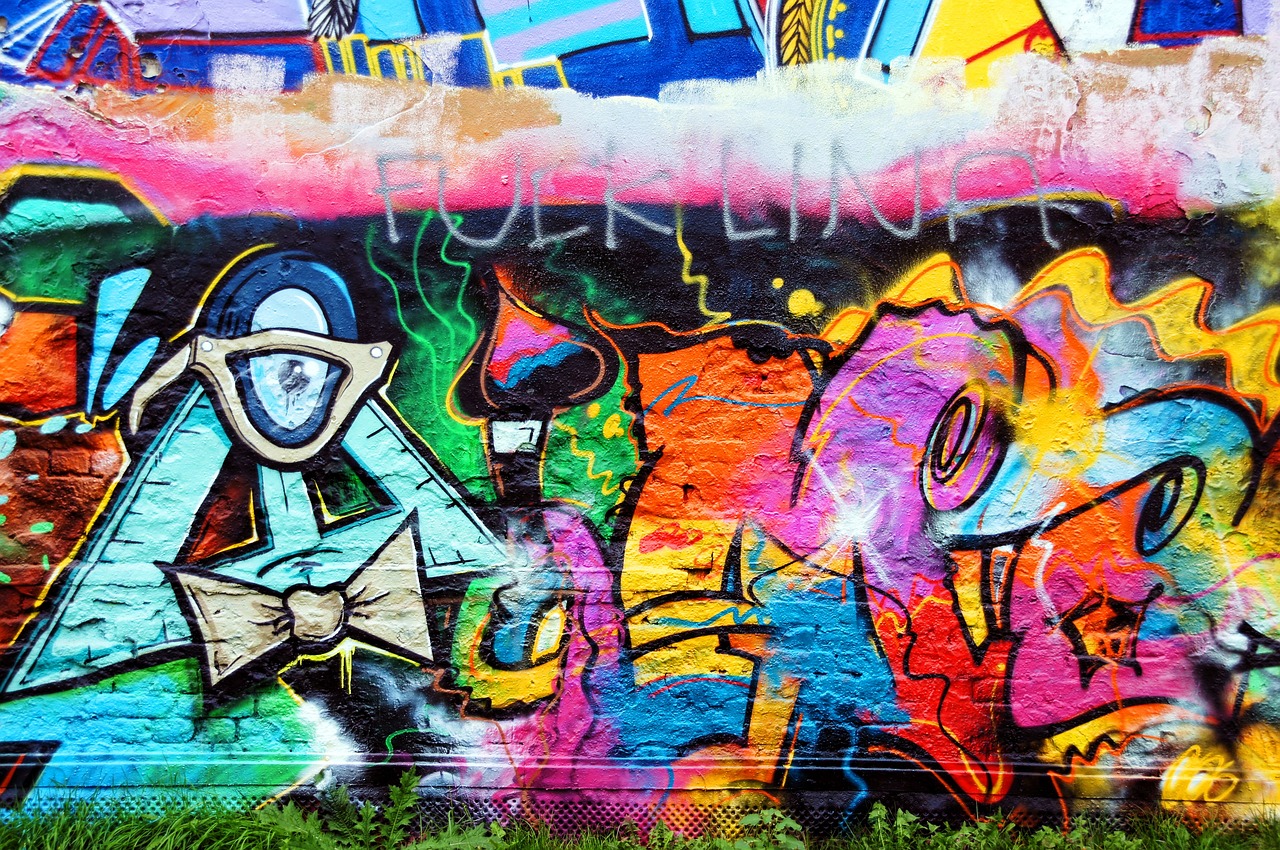
Basic Techniques for Beginners
Getting started with graffiti-style art can be both exciting and intimidating. The vibrant colors, bold designs, and sheer creativity involved in this art form can make anyone feel like a kid in a candy store. But before you dive headfirst into your spray paint collection, it’s crucial to grasp some basic techniques that will set you up for success. Think of these techniques as the building blocks of your artistic expression. They’ll help you create stunning pieces that not only reflect your style but also resonate with viewers.
First and foremost, let’s talk about line work. Lines are the backbone of any artwork, and in graffiti, they can make or break your design. Clean, bold lines give your pieces structure and clarity. To achieve this, practice using different pressures on your spray can. A light touch can create thin lines, while a firmer grip will yield thicker strokes. Experiment with different angles and distances from the surface to see how it affects the line quality. Remember, a steady hand is key—practice makes perfect!
Next up is shading. This is where your graffiti art can really come to life. Shading adds depth and dimension, transforming flat designs into dynamic visuals. Start by choosing a primary color for your artwork. Then, select a slightly lighter and a darker shade of that color. Using the darker shade, apply it to the areas that would naturally be in shadow. This could be the sides or the bottom of your letters or shapes. Gradually blend in the lighter shade to create a smooth transition. This technique not only adds realism but also enhances the overall aesthetic of your piece.
Another fundamental aspect to master is color blending. This technique allows for seamless transitions between colors, making your artwork visually appealing. To blend colors effectively, start by layering them while they are still wet. Use a soft spray motion to gently overlap the edges of two colors. This will create a gradient effect that looks polished and professional. Don’t be afraid to experiment with different combinations—color blending is all about finding what works for you.
To help you visualize these techniques, here’s a simple table summarizing the basic techniques:
| Technique | Description |
|---|---|
| Line Work | Creating clean, bold lines using varying pressure on the spray can. |
| Shading | Adding depth using lighter and darker shades of the primary color. |
| Color Blending | Seamlessly transitioning between colors while they are still wet. |
As you practice these techniques, remember that graffiti art is not just about following rules; it’s about expressing yourself. Don’t hesitate to break the mold and try new things. Your unique style will emerge as you gain confidence in your abilities. And speaking of confidence, one of the best ways to build it is by sharing your work with others. Join local art communities or online forums where you can get feedback and connect with fellow artists. This interaction can provide invaluable insights and inspiration that will further enhance your skills.
Now, as you embark on this creative journey, you may have some lingering questions. Here are a few Frequently Asked Questions that might help:
- What type of spray paint is best for beginners? Look for high-quality, low-odor spray paints that are easy to control.
- Can I practice graffiti art indoors? While it’s best to work outdoors to avoid fumes, you can practice on large paper or cardboard indoors with good ventilation.
- How do I protect my artwork once it’s finished? Consider using a clear sealant to protect your graffiti from fading or damage.
In conclusion, mastering the basic techniques of graffiti art is essential for any beginner. With practice and a willingness to experiment, you’ll find your unique voice in this vibrant art form. So grab your spray cans, unleash your creativity, and let your imagination run wild!
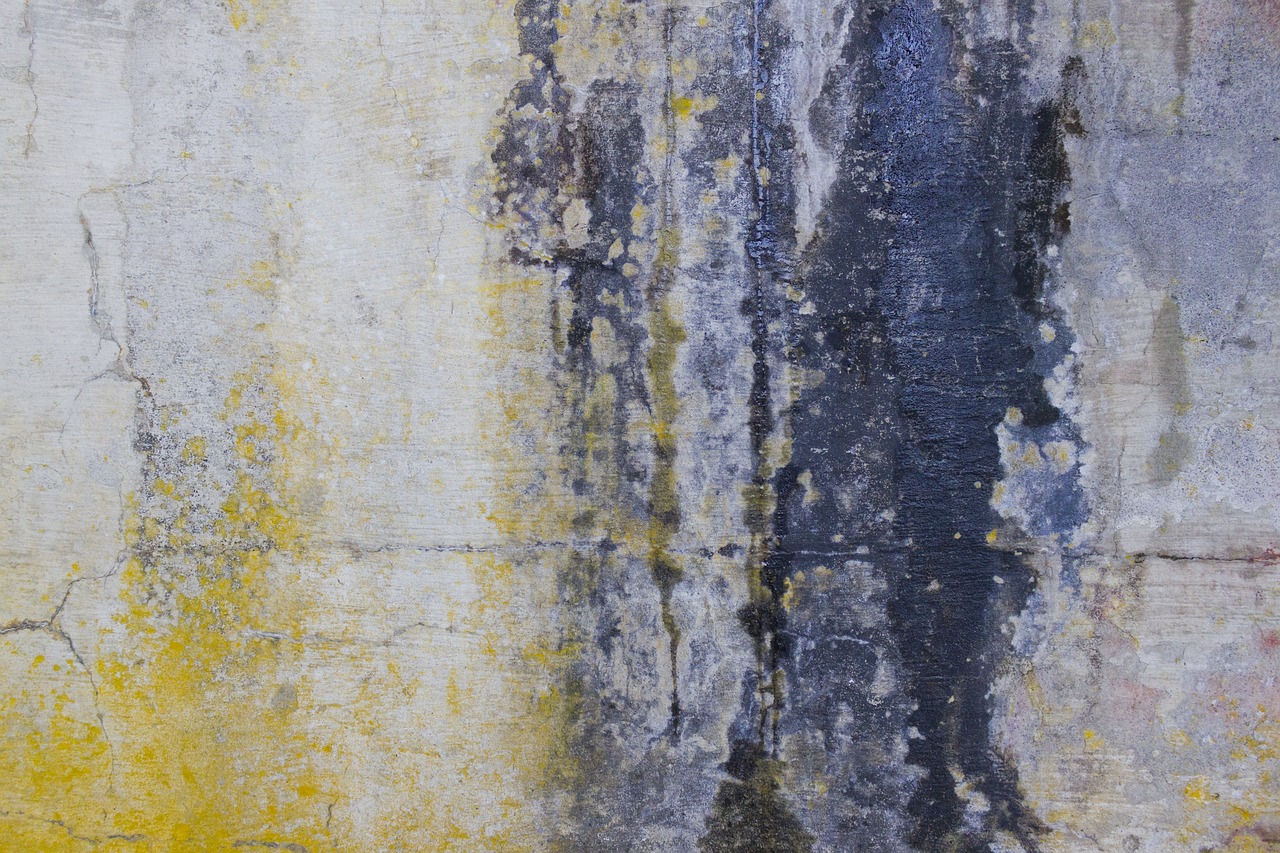
Line Work Fundamentals
When diving into the world of graffiti art, line work serves as the backbone of your creations. It’s not just about throwing paint on a wall; it’s about crafting lines that breathe life into your artwork. Think of line work as the skeleton of your piece—it provides structure and form. Without solid lines, even the most vibrant colors can fall flat. So, how do you master this essential technique?
First off, you need to understand the different types of lines you can create. From crisp, sharp edges to soft, flowing curves, each line carries its own emotional weight. For instance, straight lines can convey a sense of order and precision, while wavy lines often evoke feelings of movement and freedom. To practice, grab a sketchbook and start experimenting with various line styles. Try creating different thicknesses and lengths; this will not only improve your control but also enhance your overall artistic expression.
Another crucial aspect of line work is cleanliness. You want your lines to be bold and confident. Here are some tips to help you achieve that:
- Steady Hand: Practice drawing with a steady hand. If you're using spray paint, try to keep your wrist relaxed and your movements fluid.
- Pressure Control: Adjust the pressure on your spray can or marker to vary the line thickness. This adds dynamic quality to your work.
- Layering: Don’t be afraid to layer your lines. Start with a light outline and gradually build up to a more defined, darker line.
Moreover, consider the direction of your lines. Lines that lead the viewer's eye across the canvas can create a sense of movement and guide them to focal points in your artwork. For example, if you want to draw attention to a specific element, use lines that converge toward that point. It’s like creating a visual pathway for your audience!
Lastly, don't underestimate the power of practice. Like any skill, mastering line work takes time. Set aside dedicated time each week to focus solely on your line work. You could even challenge yourself with different styles—try mimicking the lines of your favorite graffiti artists. This not only hones your skills but also helps you develop your unique style.
In summary, line work is a fundamental aspect of graffiti art that can make or break your piece. By practicing different types of lines, maintaining cleanliness, controlling pressure, and being mindful of direction, you’ll be well on your way to creating stunning graffiti artworks that stand out. So, grab your tools, and let those lines flow!
Q: What type of surface is best for practicing line work?
A: Smooth surfaces like canvas or sturdy paper are ideal for practicing line work, as they allow for better control and precision.
Q: How can I improve my hand steadiness?
A: Regular practice is key. Try drawing lines on paper without looking, or use a ruler to guide your hand until you feel more confident.
Q: Should I use markers or spray paint for line work?
A: Both can be effective! Markers are great for detailed work, while spray paint can create bold, sweeping lines. Experiment with both to see what suits your style!
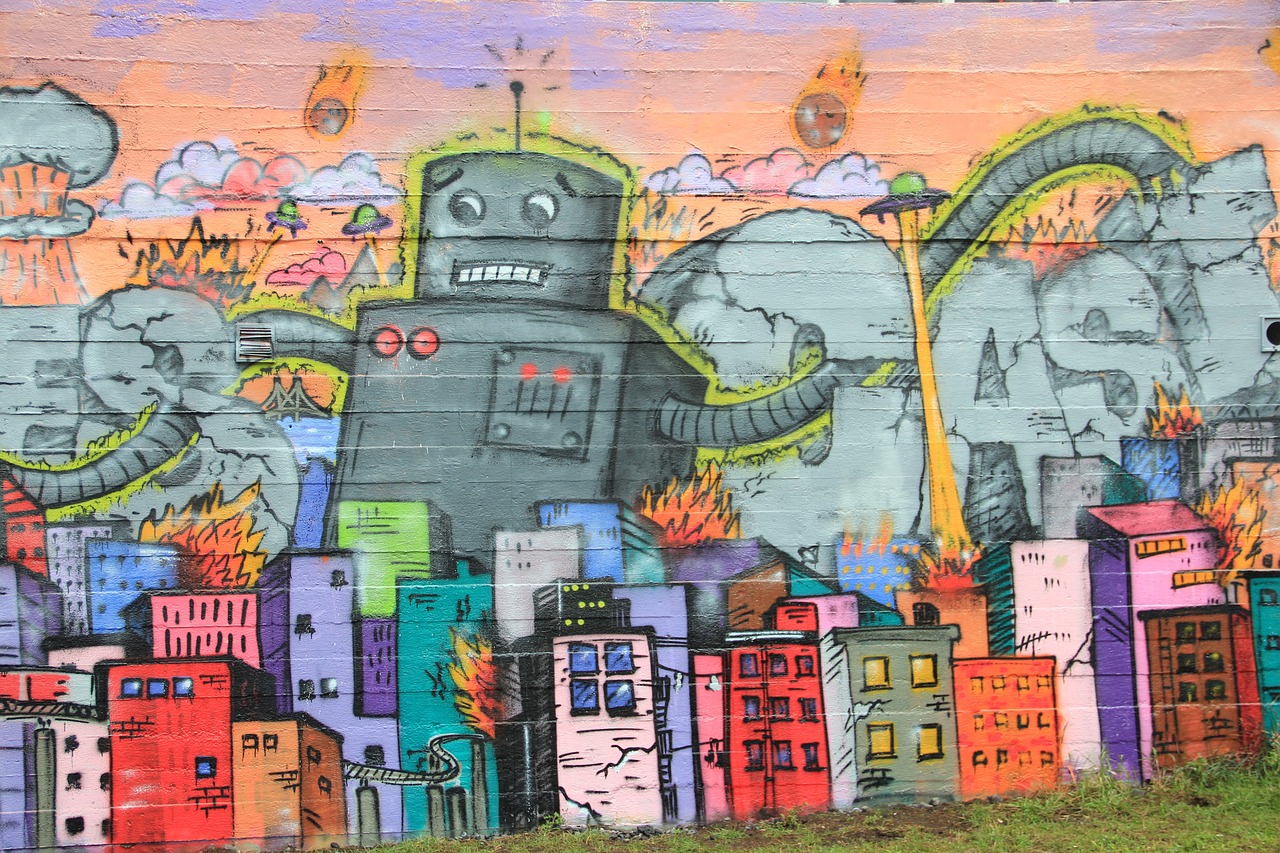
Shading and Depth
When it comes to graffiti art, shading and depth are the secret ingredients that can elevate your work from basic to breathtaking. Imagine your artwork as a three-dimensional sculpture, where every stroke and hue plays a crucial role in creating that illusion of depth. The right shading can make your designs leap off the wall, capturing the viewer’s attention and inviting them to explore every detail. But how do you achieve that magical effect?
First, let's talk about the importance of understanding light and shadow. Just like in photography, where lighting can dramatically change the mood of a scene, the way you apply shading in your graffiti can transform the overall impact of your piece. Think about where your light source is coming from. Is it the sun shining from above, or a street lamp casting an eerie glow? This will dictate how you shade your work. For instance, if the light is coming from the left, the right side of your letters or shapes will naturally be darker.
To get started with shading, you can use a few basic techniques:
- Gradient Shading: This technique involves gradually transitioning from a dark color to a lighter one. It creates a smooth effect that mimics the way light interacts with surfaces.
- Cross-Hatching: By drawing overlapping lines at different angles, you can create texture and depth. This method is particularly effective for adding dimension to intricate designs.
- Stippling: This involves using dots to create shading. It’s a slower process but can yield stunning results, especially in detailed areas.
Once you’ve got the basics down, it’s time to practice layering your colors. Start with a base color and then add darker shades to create shadows, followed by lighter colors to highlight areas where light hits. The key here is to blend these colors seamlessly. Use a soft spray or a blending tool to ensure that your transitions are smooth, giving your artwork a polished look. Remember, practice makes perfect, so don’t be afraid to experiment with different techniques until you find your unique style.
Finally, consider the overall composition of your piece. Shading isn’t just about adding depth to individual elements; it’s about creating a cohesive artwork that draws the eye across the canvas. Think of it as a dance between light and dark, guiding the viewer's gaze and enhancing the story your art tells. Whether you're going for a gritty street vibe or a sleek, modern look, mastering shading will undoubtedly take your graffiti to the next level.
In conclusion, shading and depth are not just technical skills; they are the heart and soul of graffiti art. By understanding how to manipulate light and shadow, you can create pieces that resonate with emotion and energy. So grab your spray cans, experiment with these techniques, and watch as your graffiti transforms into something truly spectacular!
- What materials are best for practicing shading in graffiti? Start with quality spray paints and markers. Experiment with different surfaces like canvas, cardboard, and walls to see how the materials interact with your shading techniques.
- How do I know which colors to use for shading? A good rule of thumb is to choose darker tones of your base color for shadows and lighter tones for highlights. Don’t hesitate to refer to color theory to find harmonious combinations.
- Can I use digital tools for shading practice? Absolutely! Digital art software offers great tools for practicing shading techniques without the mess. Plus, you can easily undo mistakes and experiment with layers.
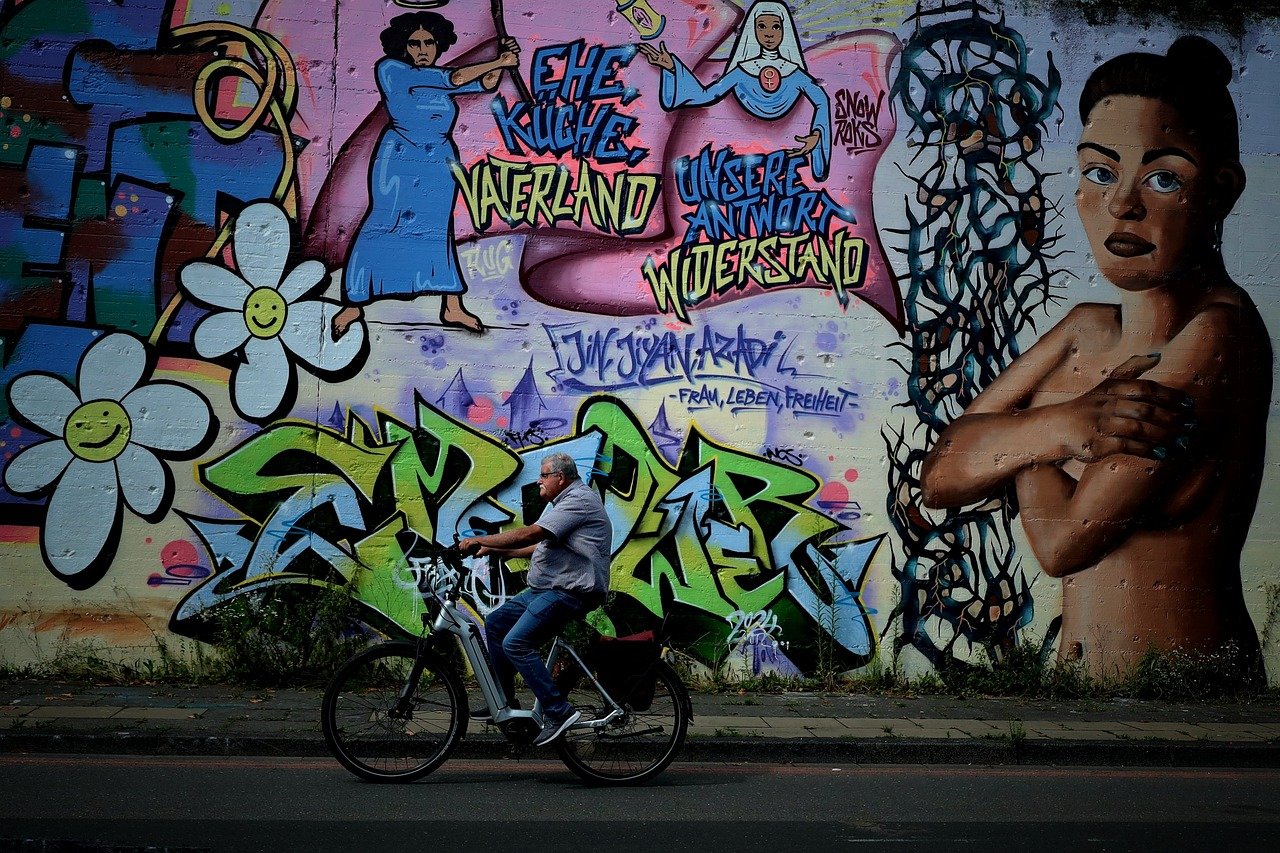
Choosing Your Color Palette
When it comes to creating graffiti-style artworks, the color palette you choose can make or break your piece. Selecting the right colors isn't just about picking what looks good; it's about understanding the emotional impact that colors can have on the viewer. Think of your palette as the mood ring of your artwork—each hue can evoke different feelings and reactions. So, how do you go about choosing the perfect colors for your graffiti masterpiece?
Firstly, it’s essential to grasp the basics of color theory. This involves understanding the color wheel, which consists of primary, secondary, and tertiary colors. Primary colors (red, blue, yellow) can be mixed to create secondary colors (green, orange, purple), and from there, you can create a whole spectrum of shades. A well-balanced palette often includes a mix of these colors to create harmony and visual interest.
Moreover, consider the emotional associations of colors. For example, blue often conveys calmness and tranquility, while red can evoke feelings of passion and energy. When you’re choosing your colors, think about the message you want to send. Are you aiming for something vibrant and energetic, or something more subdued and reflective? Here’s a quick rundown of some common color emotions:
| Color | Emotion |
|---|---|
| Red | Passion, Energy |
| Blue | Calm, Trust |
| Yellow | Happiness, Optimism |
| Green | Growth, Harmony |
| Purple | Creativity, Luxury |
Once you have a sense of the emotions you want to convey, it’s time to think about complementary colors. These are colors that sit opposite each other on the color wheel and create a striking contrast when used together. For instance, pairing blue with orange can make both colors pop, drawing the viewer’s eye immediately. Don’t be afraid to experiment with different combinations; sometimes, the most unexpected pairings yield the most exciting results.
Another important aspect of choosing your color palette is to consider the overall composition of your artwork. If you’re working on a large mural, a more extensive palette can create depth and complexity. However, for smaller pieces, sticking to a limited palette can help unify your design and make it more impactful. A common approach is to use three main colors, with one being the dominant color and the others serving as accents.
Lastly, always keep in mind that practice makes perfect. The more you experiment with different colors and combinations, the more you’ll develop a keen eye for what works. Don’t hesitate to take inspiration from other artists, nature, or even everyday objects around you. The world is full of color, and sometimes the most mundane things can spark your creativity. So grab your spray cans and start playing with colors—your next masterpiece is waiting!
- What are the best colors for graffiti art? It depends on the mood you want to convey, but vibrant colors like red, yellow, and blue often work well.
- How do I create contrast in my artwork? Use complementary colors to make elements stand out against each other.
- Can I use any surface for graffiti? While you can use various surfaces, it's best to use materials designed for graffiti to achieve the best results.

Color Blending Techniques
When it comes to graffiti art, color blending is an essential skill that can elevate your pieces from ordinary to extraordinary. Imagine standing in front of a vibrant mural, where colors seamlessly merge into one another, creating a mesmerizing flow that draws you in. That’s the magic of color blending! It’s not just about slapping paint on a wall; it’s about crafting a visual experience that tells a story.
One effective technique is the wet-on-wet method. This involves applying a new layer of paint on top of wet paint, allowing the colors to mix directly on the surface. It’s like a dance between hues, where they swirl and merge in beautiful harmony. To achieve this, start with a base color and then overlay another color while it’s still wet. The result? A stunning gradient effect that adds depth and life to your work.
Another popular technique is the dry brushing method. This technique involves using a dry brush with very little paint on it to lightly sweep over a dried layer of paint. This creates a soft, textured effect that can add dimension to your artwork. Think of it as adding a whisper of color, just enough to enhance your design without overwhelming it. It’s a great way to introduce subtle variations that can make your piece feel more dynamic.
Additionally, consider using layering as a fundamental approach to color blending. Start with your base colors and gradually build up layers of different shades. This method allows for more control and can lead to stunning visual effects. You can create a sense of light and shadow by using lighter and darker tones of the same color. This technique is akin to sculpting with paint, where each layer adds depth and complexity to your art.
For those who love experimenting, try using a sponge or a blending tool. These tools can create unique textures and effects that brushes simply can’t replicate. Sponges can produce a soft, mottled look, while blending tools can help you achieve smooth transitions between colors. Don’t be afraid to mix and match these techniques to find what works best for your style!
Lastly, always remember the importance of contrast when blending colors. While blending is about smooth transitions, contrast can make your artwork pop. By juxtaposing blended areas with bold, solid colors, you create focal points that guide the viewer’s eye. It’s all about balance—like a well-composed symphony where every note plays a crucial role in the overall harmony.
In conclusion, mastering color blending techniques is a journey that requires practice and experimentation. Don’t be discouraged if your first attempts don’t turn out as expected. Art is about exploration and finding your unique voice. So grab your spray cans, unleash your creativity, and let the colors flow!
- What is the best type of paint for graffiti art? Spray paint is the most popular choice due to its versatility and ease of use, but markers and acrylics can also be effective.
- How can I protect my graffiti art? Consider using a clear sealant to protect your artwork from the elements and fading over time.
- Can I blend colors on any surface? While many surfaces work well, it’s best to choose materials designed for graffiti, like specially treated walls or canvases.
- How do I know which colors to blend? Experiment with different color combinations and consider using a color wheel to find complementary colors.
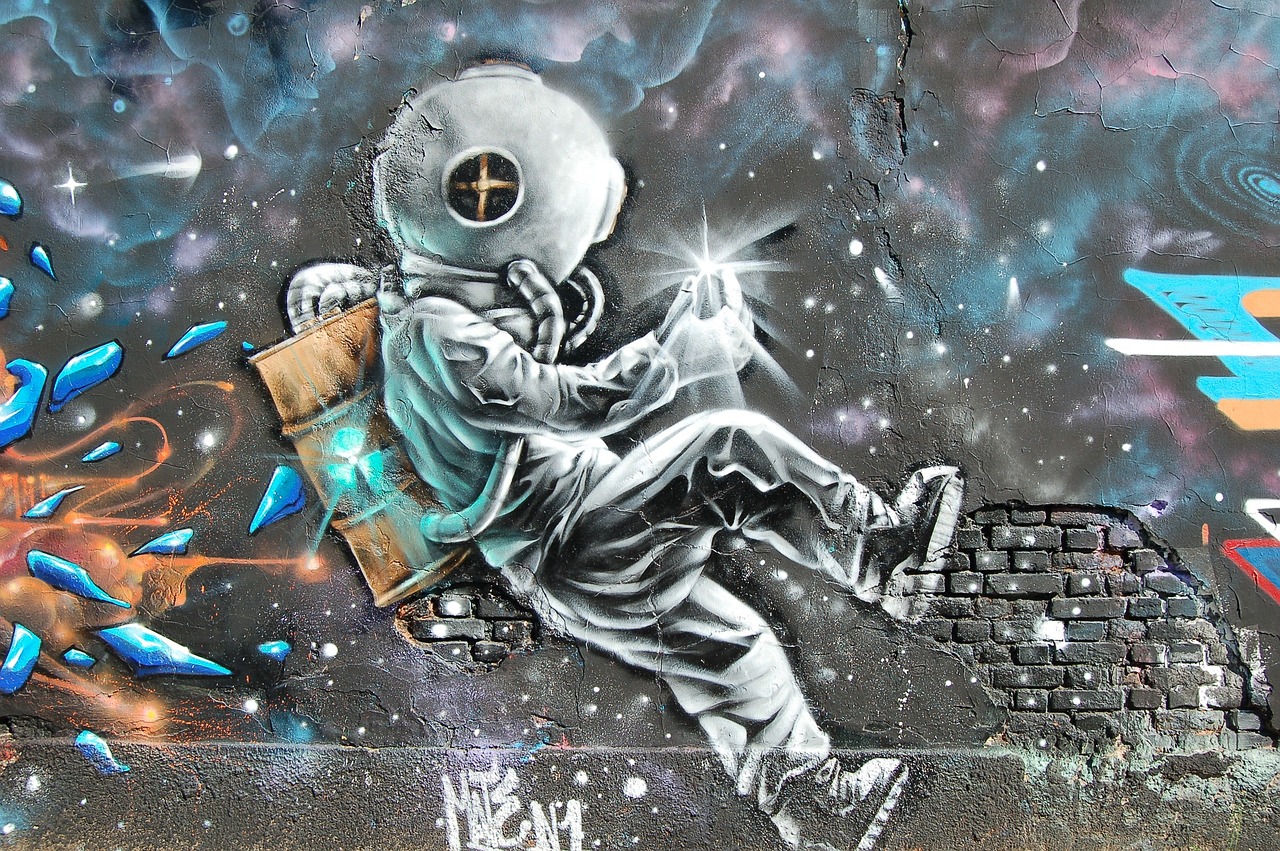
Creating Contrast
Creating contrast in your graffiti artworks is like adding spice to a dish; it elevates the entire experience and makes your art come alive! Contrast is crucial because it draws the viewer's eye to specific elements, making them pop against the background. Think about it: when you see a vibrant color next to a muted one, your attention is immediately captured. This principle applies not only to colors but also to shapes, sizes, and textures.
To effectively create contrast in your graffiti art, consider the following techniques:
- Color Contrast: Use complementary colors from the color wheel. For example, pairing blue with orange or yellow with purple can make your artwork visually striking.
- Size Contrast: Vary the size of your elements. Large shapes can be balanced with smaller ones, creating a dynamic interplay that keeps the viewer engaged.
- Texture Contrast: Mixing smooth and rough textures can add depth. For example, a glossy finish on a bold letter can contrast beautifully with a gritty background.
Another effective method is to use light and shadow. By incorporating shadows behind your letters or images, you can create a three-dimensional effect that adds depth and intrigue. This technique not only enhances the visual appeal but also gives your artwork a sense of realism. Think of it as creating a stage where your characters can shine!
Additionally, consider the placement of your contrasting elements. A well-placed highlight can turn an ordinary piece into something extraordinary. Imagine a bright yellow streak cutting through a dark blue background; that’s the kind of contrast that can evoke strong emotions and grab attention.
Finally, don’t be afraid to experiment! Sometimes, the best contrast comes from unexpected combinations. Try layering colors or using unusual shapes to see what resonates with you. Remember, art is about expression and exploration, so let your creativity flow and watch how contrast can transform your graffiti-style artworks into eye-catching masterpieces.
Q: What is the best way to start creating contrast in my graffiti art?
A: Begin by experimenting with complementary colors and varying the sizes of your elements. This will help you understand how different contrasts work together.
Q: How can I ensure that my contrasts are effective?
A: Pay attention to the overall composition of your piece. Step back and view your artwork from a distance to see if the contrasting elements stand out as intended.
Q: Is it necessary to use a lot of colors to create contrast?
A: Not at all! Sometimes, a limited color palette can create stunning contrasts. Focus on the relationships between the colors you choose instead of the number of colors.
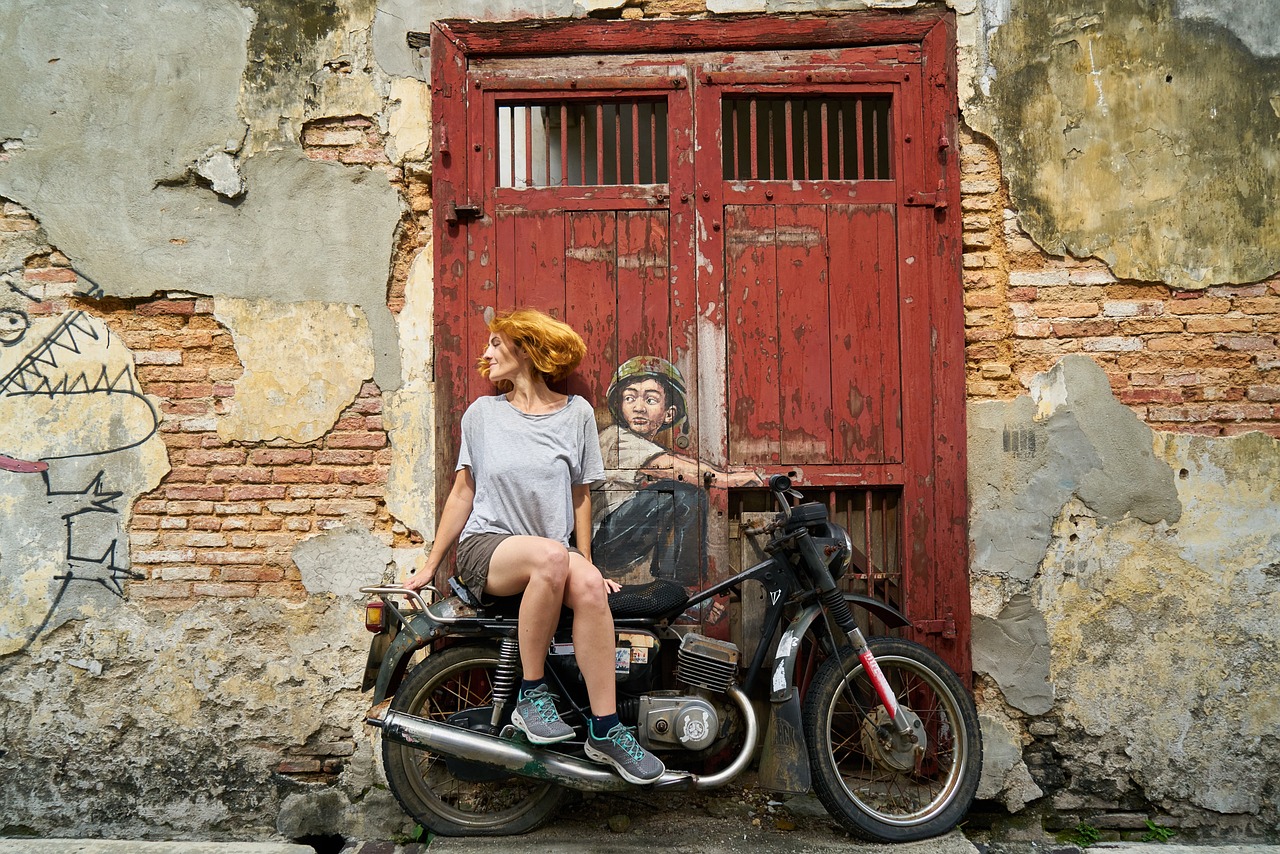
Finding Inspiration for Your Art
Finding inspiration for your graffiti-style artworks can sometimes feel like searching for a needle in a haystack. However, the world is brimming with creative sparks just waiting to ignite your imagination! One of the best ways to get inspired is to immerse yourself in the vibrant culture of street art. Take a stroll through your city and pay attention to the murals, tags, and installations that adorn the walls. Each piece tells a story, and you might find elements that resonate with your own artistic vision.
Another fantastic source of inspiration can come from online platforms. Websites like Instagram, Pinterest, and even dedicated graffiti art forums are treasure troves of innovative ideas. Follow artists whose work you admire, and don't hesitate to explore hashtags related to graffiti art. This digital exploration can help you discover new techniques and styles that you can incorporate into your own creations.
In addition to these resources, consider visiting local art galleries or street art festivals. These events often showcase the work of both established and emerging artists, giving you a firsthand look at various techniques and themes. Engaging with fellow artists and enthusiasts can also spark conversations that lead to new ideas and collaborations. Remember, inspiration often comes from unexpected places!
Don't overlook the power of nature and everyday life as sources of inspiration. Sometimes, the color palette of a sunset or the intricate patterns found in urban architecture can provide the perfect backdrop for your next piece. Keep a sketchbook handy to jot down ideas or doodle whenever inspiration strikes. This practice not only keeps your creative juices flowing but also helps you develop your unique artistic voice.
Lastly, consider creating an inspiration board. This can be a physical board or a digital collection where you pin images, quotes, and color swatches that resonate with you. By curating your inspirations, you create a personal reference point that you can return to whenever you feel stuck. Remember, the key to finding inspiration is to remain open-minded and curious about the world around you!
- Where can I find graffiti art inspiration? You can find inspiration in your local environment, online platforms like Instagram and Pinterest, or by visiting art galleries and street art festivals.
- How do I develop my unique artistic voice? By experimenting with different styles, techniques, and themes, and by keeping a sketchbook to document your ideas and inspirations.
- What should I do if I feel stuck creatively? Try stepping away from your work, exploring new environments, or engaging with other artists to reignite your creative spark.
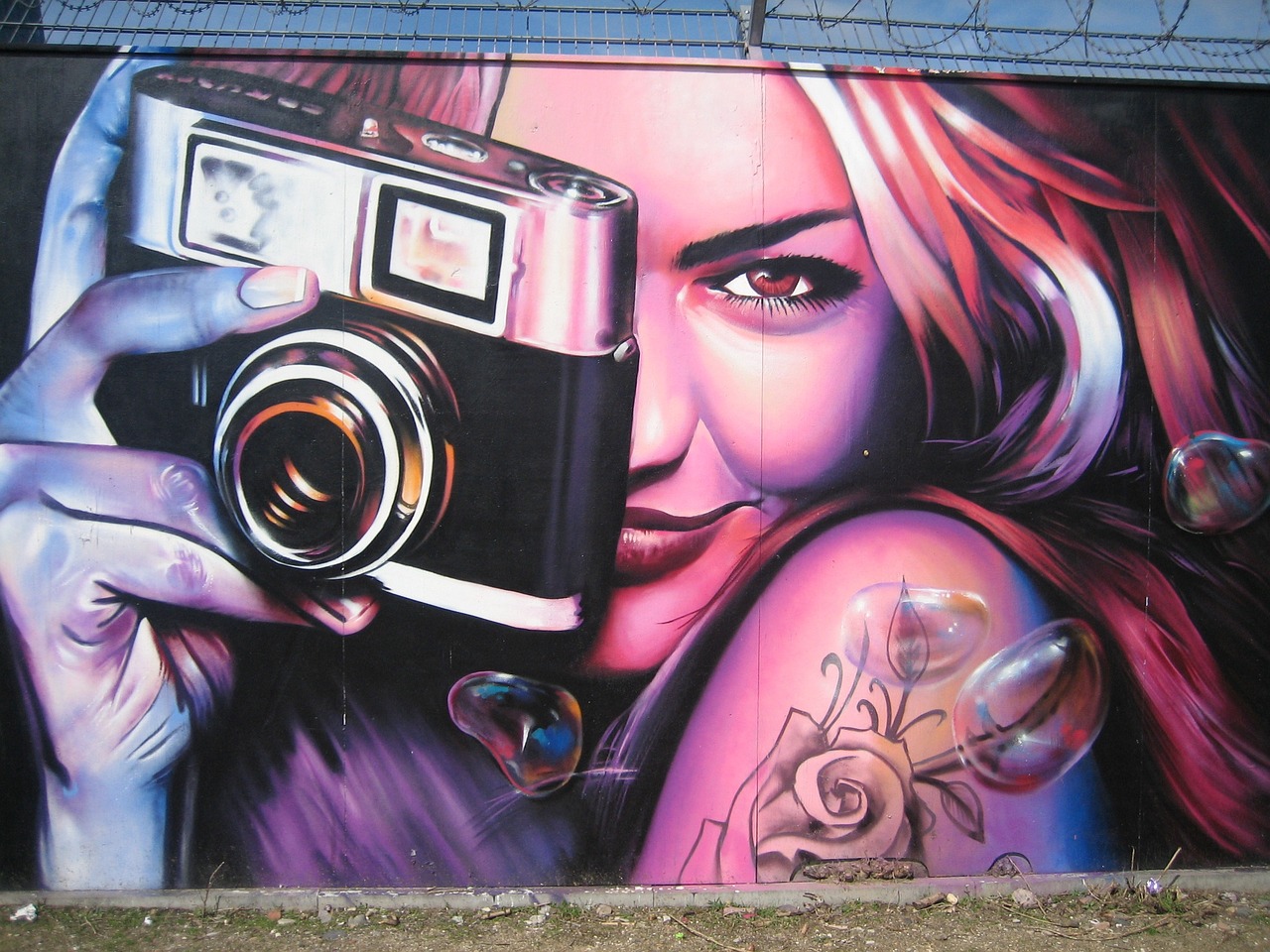
Showcasing Your Art
Once you've poured your heart and soul into creating stunning graffiti-style artworks, the next crucial step is to showcase your art effectively. After all, what’s the point of creating beautiful pieces if no one gets to see them? Think of your art as a message waiting to be delivered to the world. Here are some tips to help you share your creations and connect with a wider audience.
First and foremost, social media is an incredible platform for artists today. It allows you to reach millions of potential fans and art enthusiasts. Platforms like Instagram, Facebook, and TikTok are visually driven and perfect for showcasing your vibrant graffiti pieces. Make sure to use relevant hashtags to increase your visibility. For instance, hashtags like #GraffitiArt, #StreetArt, and #UrbanArt can help you reach viewers who are specifically interested in this genre. Engaging with your audience through comments and stories can also create a personal connection, making them more likely to follow your work.
Moreover, consider creating a dedicated art portfolio website. This can serve as your online gallery, where you can display high-quality images of your artwork, share your artistic journey, and even sell your pieces. A well-designed website can set you apart from other artists and provide a professional touch. Include sections like an artist statement, a blog where you share your creative process, and a contact form for inquiries.
If you’re looking to take your showcasing efforts offline, participating in local art exhibitions or community events can be incredibly rewarding. These venues not only allow you to display your work but also give you the chance to meet other artists and art lovers. Networking at these events can lead to future collaborations or opportunities. Consider reaching out to local galleries or community centers to see if they host exhibitions that fit your style.
Another exciting way to showcase your art is through street art tours. Many cities have organized tours that highlight local artists and their work. By participating in these tours, you can gain exposure while also contributing to the cultural landscape of your community. It’s a fantastic way to share your art with people who appreciate it and might even become your fans.
Lastly, don’t underestimate the power of merchandising. Turn your graffiti art into products like stickers, t-shirts, or prints. This not only allows you to share your art in a fun and accessible way but also opens up additional revenue streams. Plus, people love wearing or using art that resonates with them, creating a walking advertisement for your work!
In conclusion, showcasing your graffiti-style artworks is about more than just displaying them; it’s about building a community around your art. Whether through social media, exhibitions, or merchandise, the key is to engage with your audience and share your unique artistic voice. So get out there and let the world see what you’ve created!
- How can I promote my graffiti art online? Utilize social media platforms, create an art portfolio website, and engage with your audience through comments and stories.
- What are the best platforms for showcasing my art? Instagram, Facebook, and TikTok are ideal for visual art, while a dedicated website can serve as your online gallery.
- Should I participate in local art exhibitions? Absolutely! Local exhibitions are great for networking and gaining exposure in your community.
- How can I monetize my graffiti art? Consider creating merchandise like prints, stickers, or apparel featuring your artwork.
Frequently Asked Questions
- What is graffiti art and how has it evolved?
Graffiti art is a vibrant form of artistic expression that originated in urban environments. Initially seen as vandalism, it has transformed over the years into a respected art form, celebrating culture and community. Today, graffiti artists are recognized for their creativity, and many have even transitioned into galleries and exhibitions.
- What materials do I need to start creating graffiti art?
To dive into graffiti art, you'll need a few essential tools. These include spray paints in various colors, markers for fine details, and surfaces like canvas, wood, or even walls. Don't forget protective gear like masks and gloves to keep yourself safe while working!
- Can beginners really create impressive graffiti art?
Absolutely! Every artist starts somewhere, and graffiti art is all about practice and exploration. By mastering basic techniques like line work and shading, you can quickly develop your skills and create stunning pieces that reflect your unique style.
- How do I choose the right color palette for my artwork?
Selecting a color palette can be daunting, but it’s crucial for conveying emotions. Consider using color theory principles to find harmonious combinations. Experiment with different hues and see how they interact; sometimes the most unexpected colors create the best effects!
- What are some tips for finding inspiration for my graffiti art?
Inspiration can be found everywhere! Take street art tours, browse online galleries, or even visit local parks. Surrounding yourself with diverse art styles can spark new ideas and help you cultivate your own artistic voice.
- How can I effectively showcase my graffiti art?
Showcasing your art is all about connecting with your audience. Utilize social media platforms, participate in local exhibitions, or join community events. Sharing your work not only builds recognition but also creates opportunities for collaboration and growth in your artistic journey.



















